
Chinese antiques: the collecting craze
Chinese antiques are experiencing a collector’s fever. Many antique collecting associations have emerged and there are countless antique expositions. Ten millions of chinese regard collecting as investment, recreation, and the fashion.
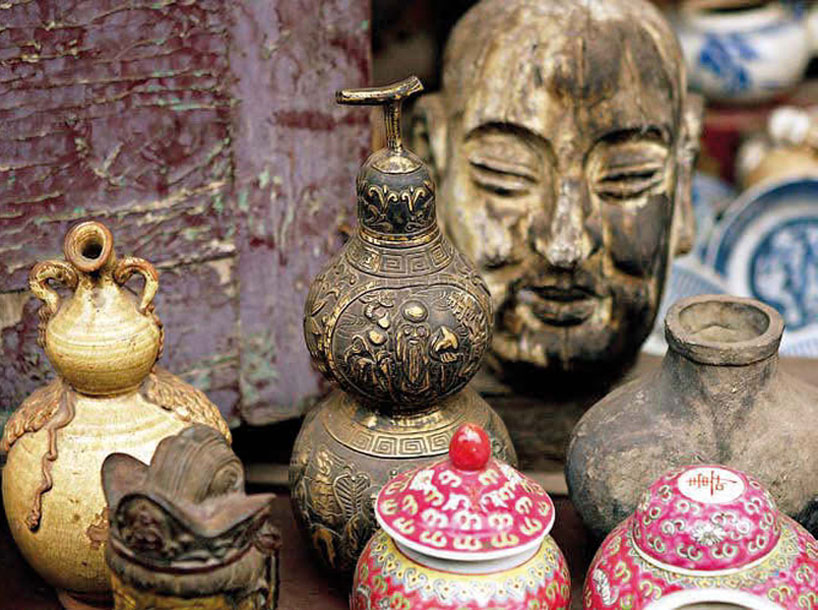
“In 1985, there was a man named Wang Maoqiang in Beijing, who, with his flat cart, walked the streets from one neighborhood to another at the edge of the capital buying up old furniture and ancient porcelain. The villagers were happy to sell them because these old pieces, useless to them, were not as desirable to them as new ones. “At that time, a porcelain antique of the Ming Dynasty (1368-1644) might cost as little as 100 yuan. Treasures were available from the street vendors,” Wang said. Few expected that chinese antiques would be as valuable as they are today; so, few engaged in antique collecting.
Two decades later, a man named Ma Weidu rose to prominence in China because of his expertise in antique collecting. Many avidly watched the TV for his anecdotes on antiques. His and other programs on chinese antiques were constantly ahead in the ratings testifying to the increasing popularity of antique collecting. Statistics show that China has tens of millions of collectors. Many antique collecting associations have emerged and there are countless antique expositions. People are also collecting a wider range of items. An increasing number of people regard collecting as investment, recreation, and the fashion.
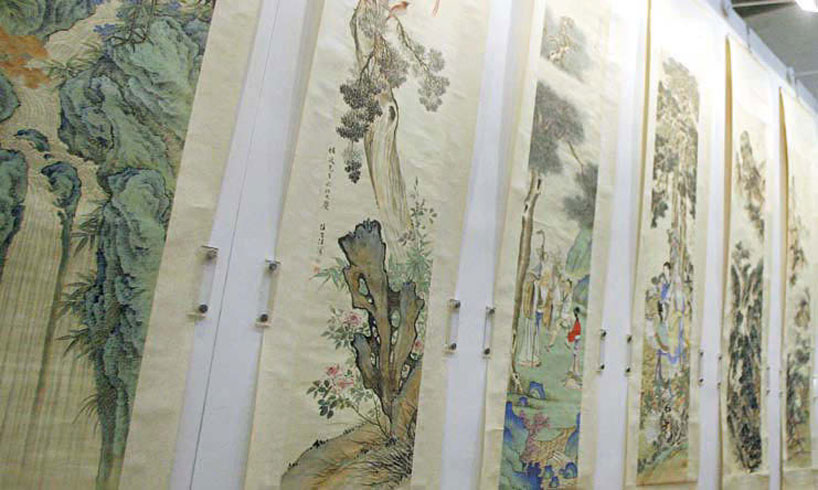
Collecting Now Accessible to the Average Person
One of the top ten flea markets, Panjiayuan has an area of 50,000 square meters. Four sections of the market, which house hundreds of stalls, are filled with art work, attracting crowds of people every day. According to an administrator, the market receives 60,000 to 70,000 people every day during holidays. “ There is only one reason for the popularity of this market: everyone expects to cash in on others’ ‘junk’,” said Bai Ming, a famous porcelain collector in Beijing. Bai has been fascinated by chinaware collecting for 20 years. He owned a private museum of chinaware. By the phrase “cash in on others’ junk”, he meant picking up a good bargain that has been overlooked by others at the antique market.
Among other popular antique markets are: Liulichang Market in Beijing, Foreign Articles Market in Tianjin, Chenghuangmiao Market in Shanghai, etc. They are most appealing to the ordinary folks. As Collector points out, “The collector composition is like a pyramid: the average enthusiasts at the base make up the largest number.” They collect more for fun or commemoration than for revaluation or study. Many are simply killing time. The collections vary widely, including almost everything one could wish for. In the past, it seemed that only the paintings and calligraphy of famous artists or ancient copies of classics were worthy of collecting. But now, ordinary articles like buttons, key rings, perfume bottles and cards, much different from chinaware and jade articles, also appear unusually precious once gathered and classified by discerning collectors.
There are more and more young faces among collectors. Antique dealing is no longer exclusive to old people. Many somewhat famous collectors are in their twenties or thirties.
Collecting is no longer a mysterious or privileged trade or a elitist recreation reserved for officials and literati. Instead, it has broken the confines of the aristocratic courtyards and become a popular “game” of the ordinary folk.
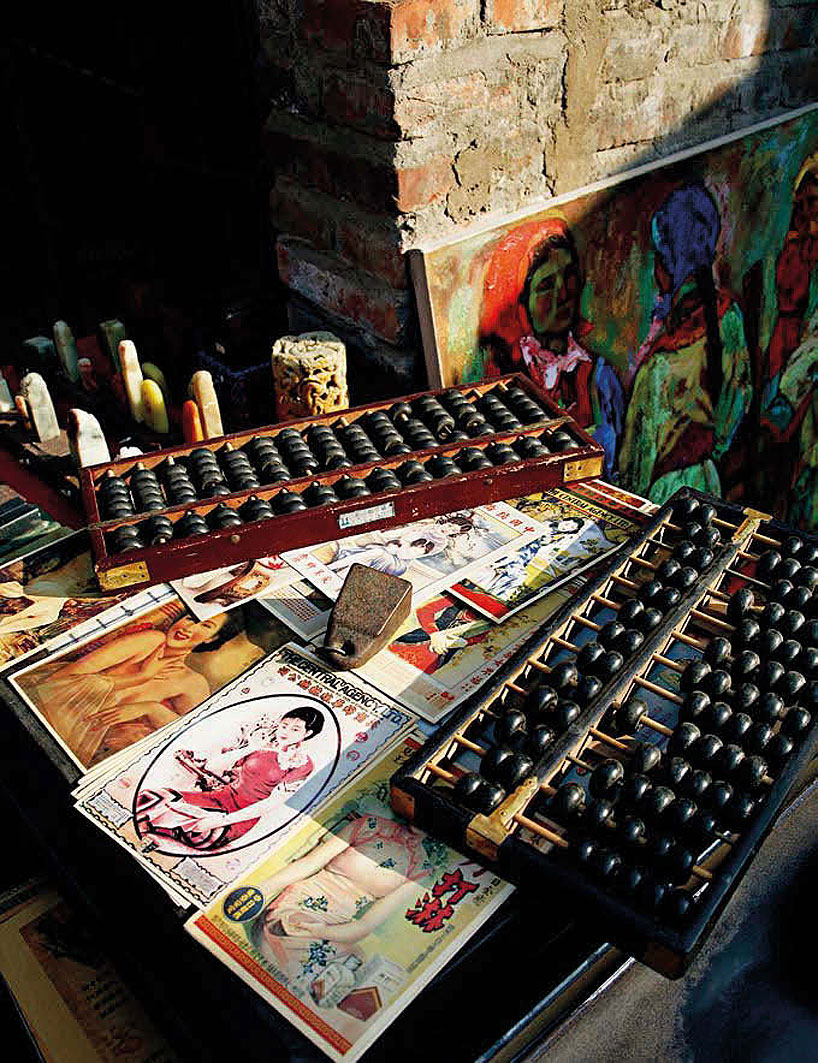
Chinese Antiques’ Global Appeal
Maryjewski and his wife, a couple from Poland, are intrigued by ancient Chinese furniture. In 2002 they settled in Beijing. On display in their home are over a thousand pieces of art works: a pair of tall red wooden doors, carpets, embroidered silk, water-color and oil paintings, chinaware, and stone carvings. To collect them, they have been to Turfan, Urumqi, Xi’an, Guilin, etc. “I’ve never seen such exquisite statues in Europe. These Chinese art works were so amazing that I bought them at first sight.”
Unlike Maryjewski who is crazy about collecting, many foreigners only occasionally pick up a few antiques out of curiosity about Chinese culture. According to Wang Limei, the manager of Panjiayuan market, many foreign visitors think it a must to spend half a day shopping in Panjiayuan which receives as many as 6,000 foreign visitors on a single day. “These Chinese Antiques’ Global Appeal antiques satisfy their curiosity about traditional Chinese culture (and enable them to own a representative piece).”
What appeals to foreign visitors is not only the marvelous exterior and meticulous craftsmanship, but the Chinese story behind each piece. The five-millennium-old Chinese civilization has a splendid historical legacy. Those foreigners who adore Chinese culture seek to unravel the ancient mystery and trace the origin of the culture by collecting chinese antiques.
This coming October, the 2009 Global Forum on Art Work Collecting will be held in Beijing. Inaugurated in the United Kingdom, the Forum has been held five times in London. Beijing will host the first one outside Europe because collecting is so popular in China. Collecting nudges us into the embrace of tradition, enriching our mind and endearing China to the World.
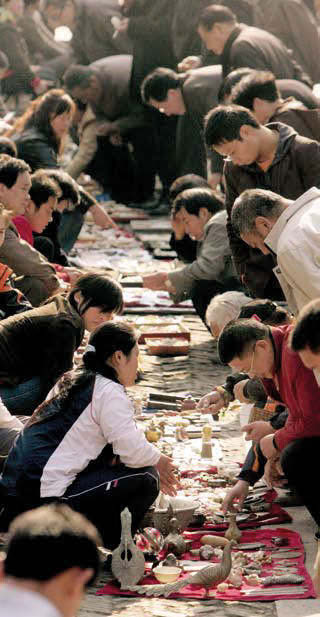
Gold in Chaos Vs Antiques in Affluence
The first collecting craze in China occurred 1,600 years ago. The next four happened in the Northern Song dynasty (960-1127), in the closing years of the Ming dynasty (1368-1644), during the thriving reigns of emperors Kangxi and Qianlong (1662-1796), and at the turn from the Qing dynasty to the Republic (around 1911). In the course of time, collecting matured. “The continuation of the traditional Chinese civilization and art relies much on collecting,” said Ma Weidu. Alongside the vicissitudes of collections, the history of collecting is evident in the enduring law: Gold is all the more valuable in chaos; whereas chinese antiques are valuable in times of affluence.
It is in prosperous periods that the craze for collecting emerges. In the wake of the May 4th Movement (in 1919), the antique market hit a new low which lasted nearly a century. Since reform and opening in the late 1980’s, China’s economy has developed rapidly and living standards have risen dramatically. It is universally acknowledged that the collecting market in a country won’t develop until the per-capita GDP reaches 1,000 to 2,000 USD. China is at this stage, providing the economic base for the collecting craze.
With the advent of the new era, the charm of ancient Chinese culture manifests itself again. People in China and abroad are repositioning the splendor of Chinese culture. “Antiques provide a frame of reference for human civilization. The awareness of antiques and the emphasis laid on culture are symbolic of the development of a nation.” It is the fabulous cultural heritage of China that provides collectors with plentiful artistic nutrition and appeals to the esthetic spirit.
Chinese antiques like sandlewood chairs, celadon jars, traditional paintings, and bronze quadripods are carriers of Gold in Chaos Vs Antiques in Affluence culture and history that span thousands of years. “The joy of collecting differs from the transient pleasure money brings. To explore the cultural background of each antique is to attend a feast of history spanning the millennia”, said Mr. Li, a 68-year-old jade enthusiast who has a collection of more than one hundred jade pieces. “There is a story behind each one. None of them were discovered and acquired with ease. I feel a strong sense of achievement once they are in my hands.” Collecting requires a lot of learning. A collector has to be well-versed in both art and general knowledge. The collector should be neither happy nor sad with a high or low price. In the eyes of a real collector, the artistic value of an antique is prized above its economic value. The real collector values the joy and experience of collecting.

Collecting reveals history and refreshes our memory of the remote past. It is a respect for culture and acknowledgement of tradition. The current collecting craze in China not only redefines the treasures of Chinese culture to us Chinese but also demonstrates, through the ancient articles, the extensiveness and profundity of Chinese culture.
“With shades of blue outlined on the pale base, the peonies on the jar remind me of your cosmetics, simple but elegant.” Gentle and melancholy, the lyrics to the Blueand- White Porcelain, a song of Jay Chou, is a perfect combination of the cultural elements of Chinese tradition with popular music. As the song indicates, the blue-and-white porcelain “exudes beauty of itself” and assumes primitive elegance in the absence of any face powder whatsoever. This also faithfully describes the intention of real collectors, who, hidden amid the popular clamor for antique collecting and displaying the archaic articles, explore the secret of remote humanity and bask in a grace and tranquility not found in reality.
 Published in Confucius Institute Magazine
Published in Confucius Institute MagazineNumber 4. Volume IV. September 2009.
View/Download the print issue in PDF






















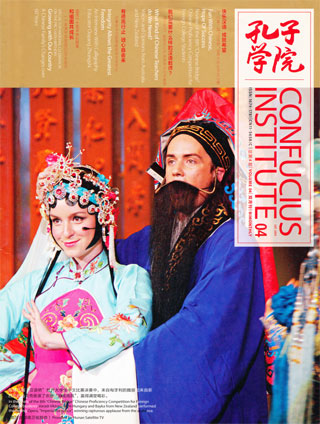
No hay comentarios:
Publicar un comentario